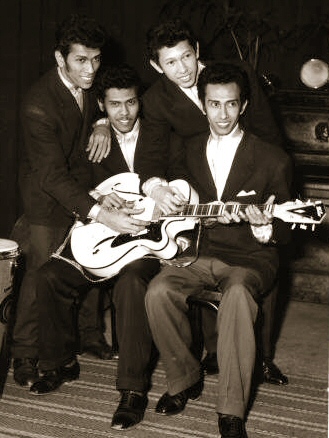


Around the same time, brothers Andy and Reggy started playing their signature Gibson Les Pauls. It was a roar of volume and energy complimented with showy antics like tossing their guitars, playing them with their teeth, their toes, behind their backs and heads, and upside down – all without missing a note or beat. It was Hendrix’s bag of tricks, minus the burning guitar, ten years before Monterey Pop. Their electrifying act quickly garnered bookings far and wide, including some in Hamburg’s notorious Reeperbaum red light district, commencing two years before the Beatles’ first stint.Ī year later, they would finally be performing as The Tielman Brothers, in Holland and mostly frequently Germany. The year also saw the release their debut single, “Rock Little Baby of Mine,” widely considered the first-ever Dutch rock-n-roll record. The World’s Fair crowds were blown away by their frenetic brand of rock-n-roll. Naturally, it became another ingredient in their fast-expanding polyglot musical brew, along with a little country & western, rockabilly and their native folk. Hawaiian music was becoming a global sensation at that time. Their big break came in 1958 when they secured a gig in the Hawaiian section of the Dutch pavilion at the World’s Fair in Brussels. In 1957, the family relocated to Breda, Netherlands where they began playing as The Four T’s. They brought spice to its culture, cuisine (the famed rice buffet, Rijsttafel) and music. The Tielman’s joined the wave of more than 300,000 Indonesians who would emigrate to Holland. They eventually began to add covers of hits by Les Paul, Elvis, Chuck Berry, Fats Domino and Gene Vincent to their act – all propelled by the ferocious guitar licks and versatile vocals of Andy Tielman. That was when four brothers – Andy, Reggy, Loulou, Ponthon and their sister Jane – were inspired to start performing traditional folks songs and dances at parties by their musically-inclined father, Herman. Within a year and half, they were on tour as The Timor Rhythm Brothers, playing the music and dances of their homeland with costumes and even war-like rituals employing spears and swords. The musical style they played, kroncong, was a fusion of traditional Indonesian music with Portuguese fado and saudade, sounds that came to these islands when European explorers arrived, with their guitars, in the 16 th Century.Īll that changed in 1951 when the Tielman’s heard the hillbilly rock of “Guitar Boogie” by Arthur Smith. In search of a harder, more American sound like Smith’s, they moved brother Loulou over to the kit drum set. Tielman’s story begins in 1945 in Surabaya, Indonesia, then a Dutch colony. Although it was big in continental Europe for a time, Indorock has remained virtually unknown in the world beyond. That honor goes to The Tielman Brothers, a quartet of Indonesian immigrants to Van Halen’s native Holland, who helped pioneer a new musical genre in the early years of rock-n-roll. It was a fusion of exotic world and American musics – a high energy, theatrical and largely instrumental guitar-driven variety played by Indonesian immigrants to the Netherlands dubbed Indorock. The late, great Edward Van Halen wasn’t the first musician of Indonesian descent to set the world ablaze with his fiery guitar work.


 0 kommentar(er)
0 kommentar(er)
